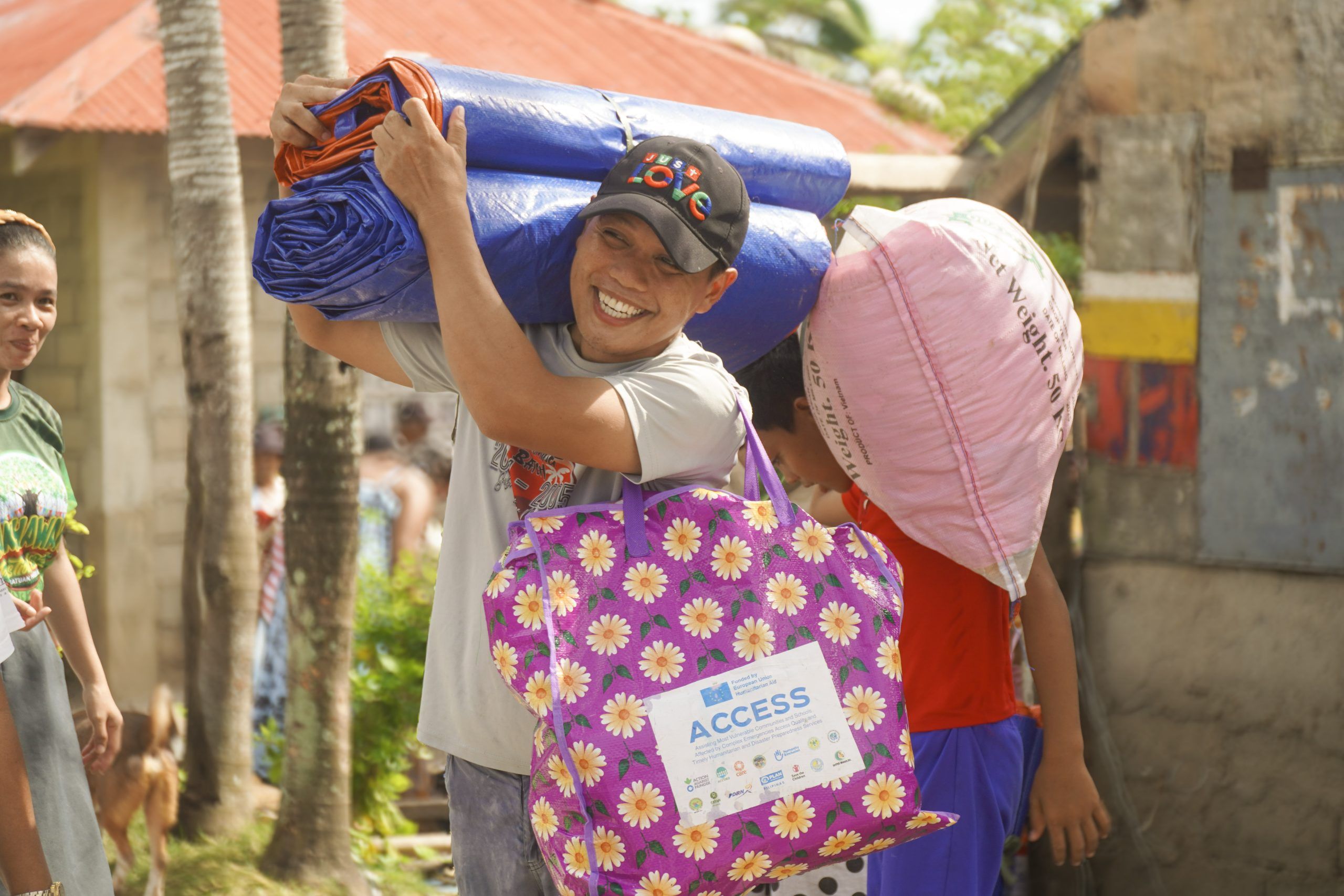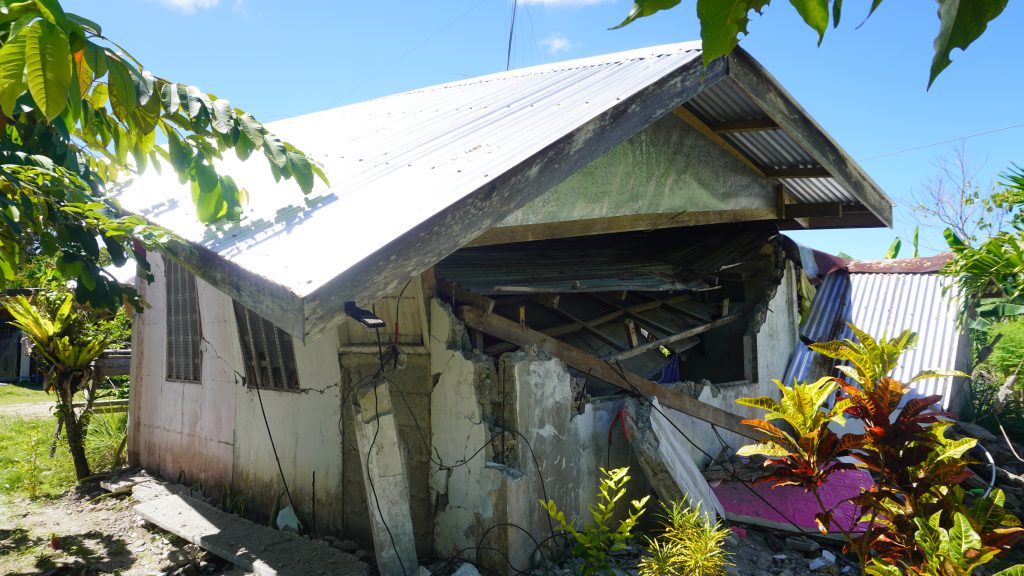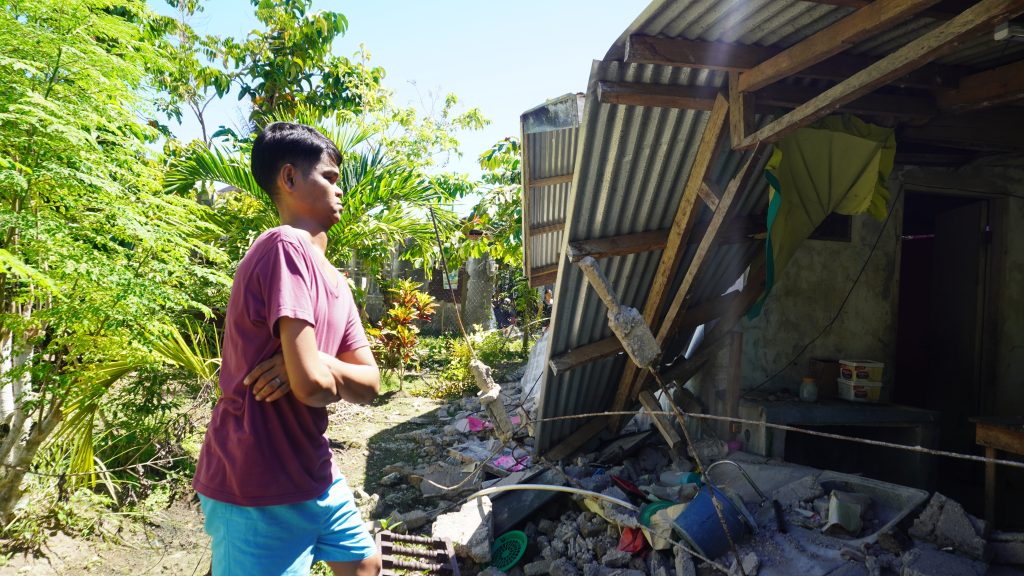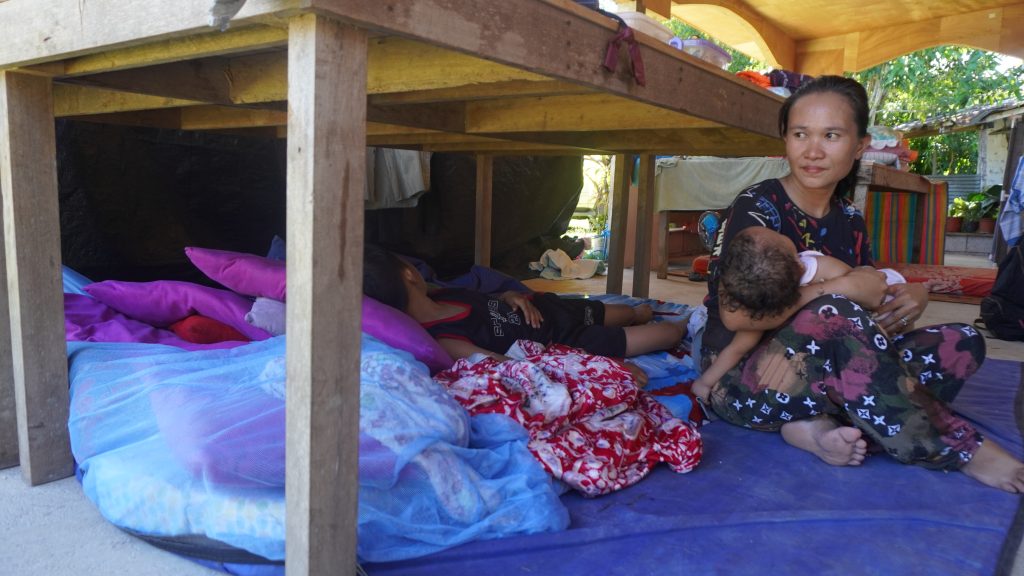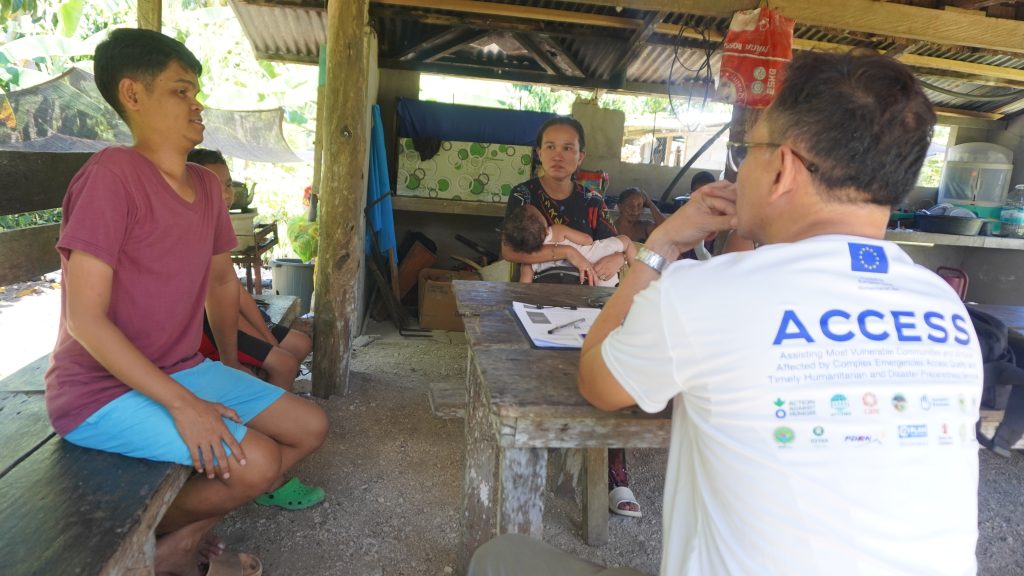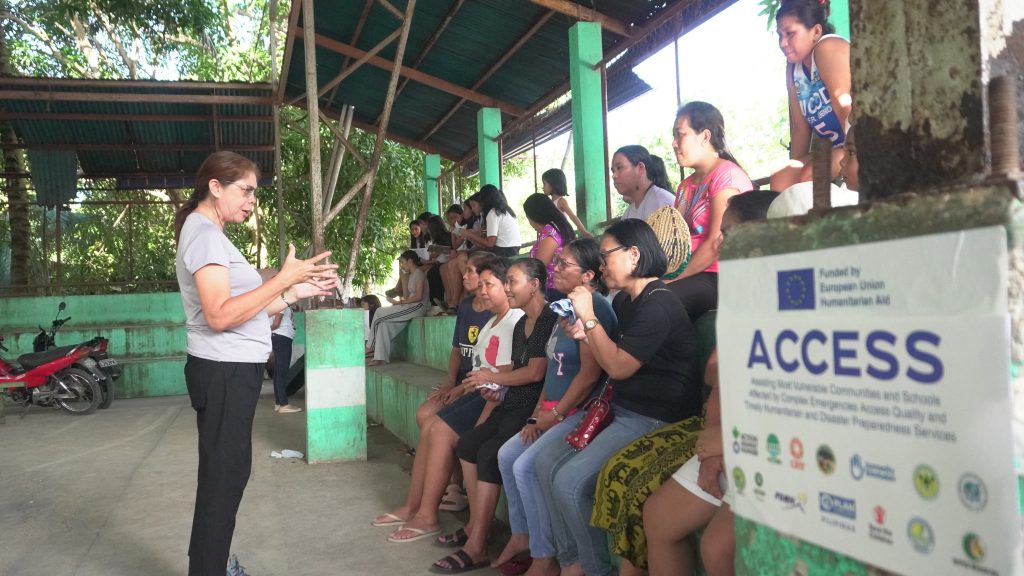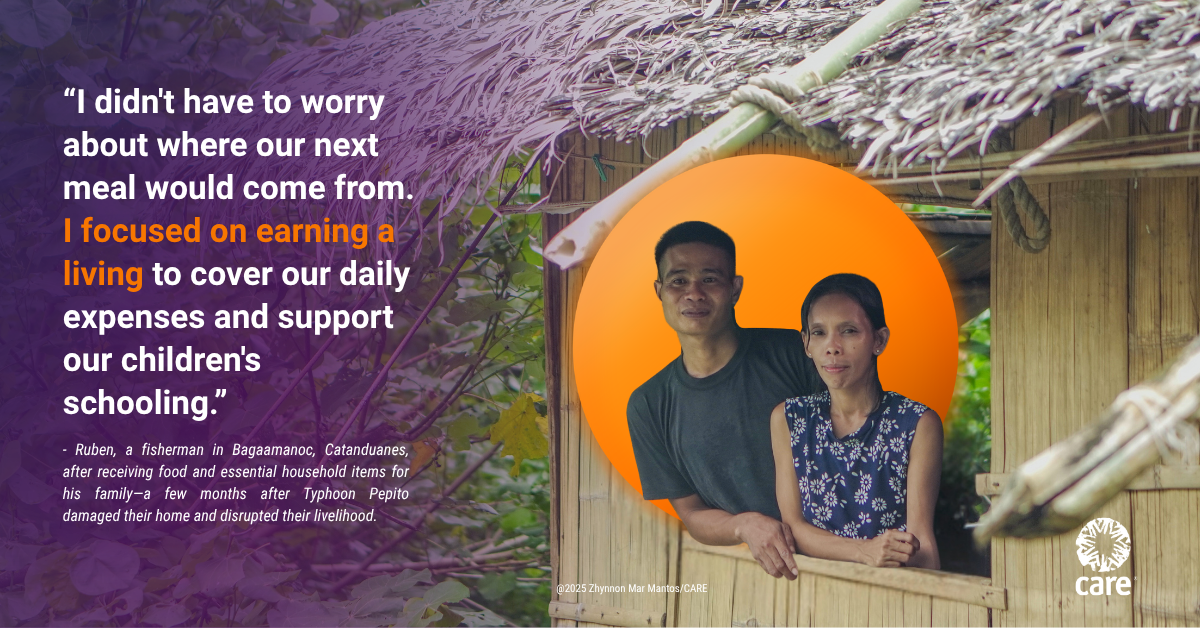After back-to-back typhoons and quake, communities rebuild with EU and ACCESS support
Highlights:
- The European Union Humanitarian Aid, through the ACCESS Project, is providing humanitarian assistance to communities affected by multiple tropical cyclones, the southwest monsoon, and the recent earthquake in Cebu.
- The most vulnerable families are receiving support on food security, water, sanitation and hygiene, psychosocial support, shelter, protection, and education.
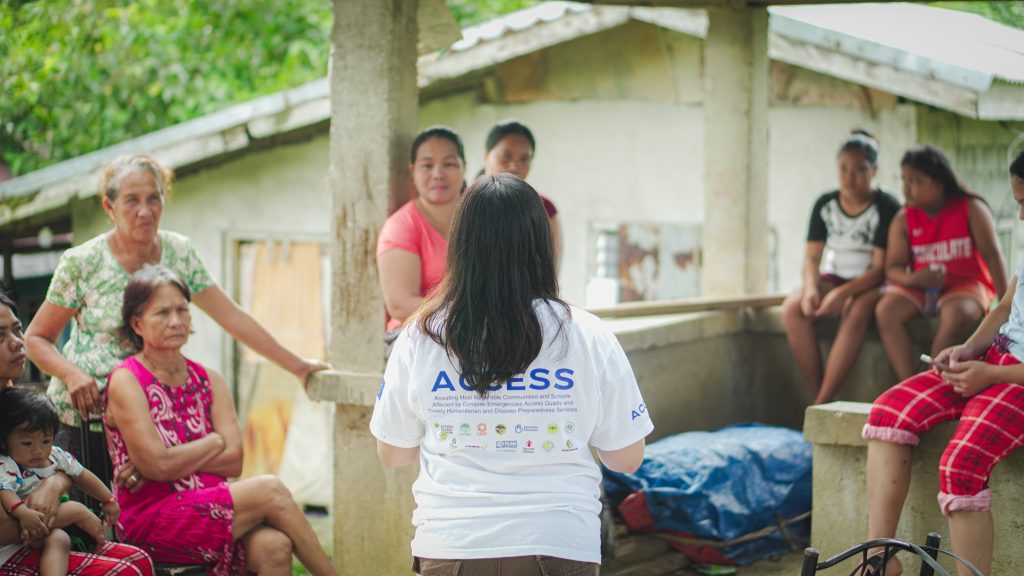
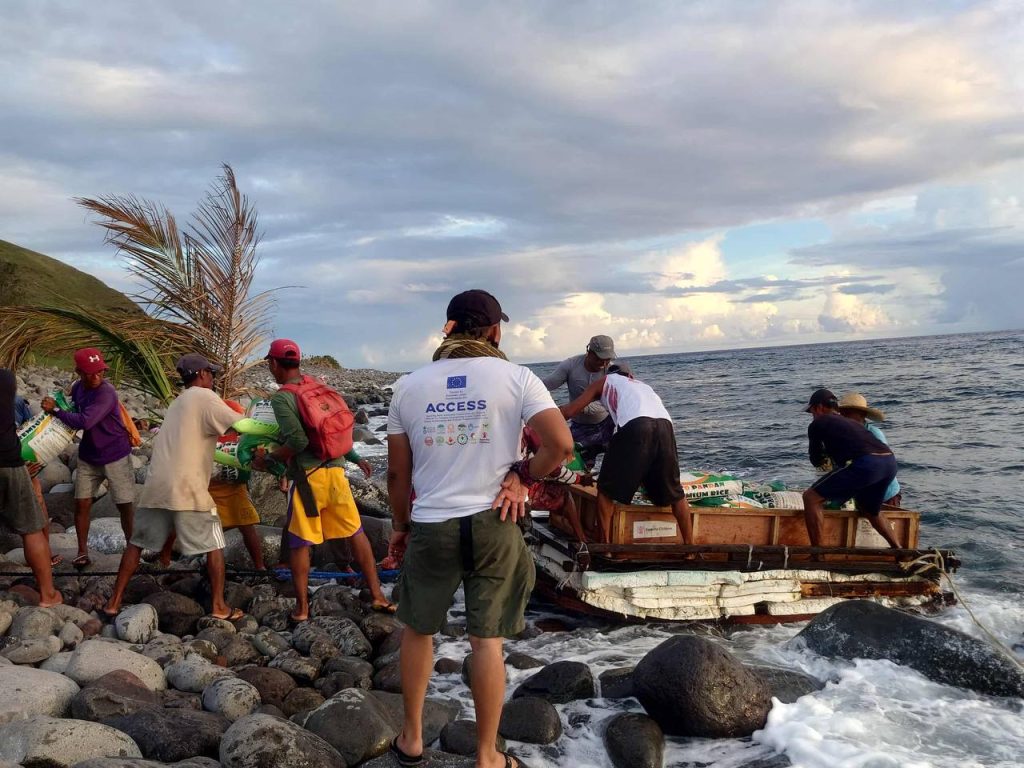
Manila, Philippines — More than 50,000 of the most affected, at-risk individuals impacted by massive floods in Masbate, Cagayan, and the Bangsamoro Autonomous Region in Muslim Mindanao (BARMM) due to back-to-back tropical cyclones Mirasol, Nando, and Opong and the Southwest Monsoon, as well as by the magnitude 6.9 earthquake in Cebu, have received life-sustaining humanitarian assistance through the European Union Humanitarian Aid–funded ACCESS Project. The support is helping affected populations meet urgent needs in food security, water, sanitation and hygiene, psychosocial support, shelter, protection, and education.
“A series of emergencies has left the most vulnerable in an even more fragile situation, driving them further into poverty. Through our humanitarian aid, we strive to bring hope and relief to the hardest-hit and hard-to-reach communities, especially persons with disabilities, children, women, and older persons,” said Melanie Ruiz, Country Manager of Humanity & Inclusion Philippines, the organization leading this particular emergency response under ACCESS.
In September, three closely spaced tropical cyclones – Mirasol, Nando, and Opong – combined with intensified monsoon rains, affected more than 4.6 million people across Luzon, Visayas, and Mindanao, displacing 94,000 individuals and resulting in 42 deaths. On 30 September 2025, a magnitude 6.9 earthquake struck Cebu and nearby provinces, with its epicenter near Bogo City. The quake affected over 750,000 people and displaced 22,000 individuals, resulting in 79 deaths and 559 injuries. At least 107 cities and municipalities declared a state of calamity due to the typhoons, and 53 more following the earthquake, underscoring the scale of humanitarian needs.
The EU Humanitarian Aid, recognizing this, provided additional funding support to the ACCESS Project, whose wide geographical reach, strong network, and deep local knowledge enable rapid, dignified, first-on-the-ground emergency response.
Community-led action is central to the ongoing response. “Our collective effort ensures that those who are often hardest to reach are not left behind,” said Edilberto Villaruel, Mindanao Coordinator of Community Organizers Multiversity, part of the ACCESS consortium. “This response embodies solidarity, compassion, and the bayanihan spirit that defines how communities come together in times of crisis.”
“Our partnership with local communities ensures that aid reaches those most affected, efficiently and equitably,” said Reiza Dejito, Country Director of CARE Philippines, which leads the ACCESS Project. “Beyond delivering aid, our role is to help restore people’s confidence in their ability to rebuild their lives. When communities lead and partners stand in solidarity, recovery becomes both sustainable and dignified.”
About ACCESS
ACCESS is multi-year, multi-sectoral humanitarian and disaster preparedness initiative funded by European Union Humanitarian Aid. It is implemented by a consortium of 14 local and international organizations: ACCORD, Action Against Hunger Philippines, CARE Philippines, Community Organizers Multiversity (COM), Humanity & Inclusion Philippines, Integrated Mindanaons Association for Natives (IMAN), Kadtabanga Foundation for Peace and Development Advocates, Mindanao Organization for Social and Economic Progress (MOSEP), Oxfam Pilipinas, People’s Disaster Risk Reduction Network (PDRRN), Plan International Pilipinas, Save the Children Philippines, United Youth for Peace and Development (UNYPAD), and United Youth of the Philippines – Women (UnYPhil-Women).
Media contacts
Sam Liberato
Communications Officer, Humanity and Inclusion Philippines
Mc.liberato@hi.org | +639394957415
Tanya Mariano
Communications Specialist, CARE Philippines
mariano.tanya@care.org | +639178514881

